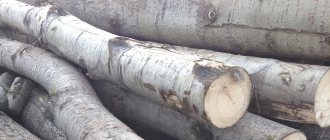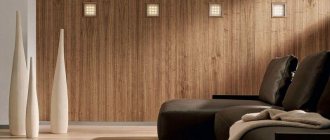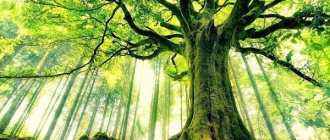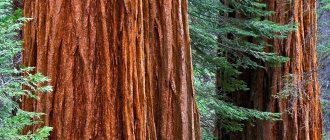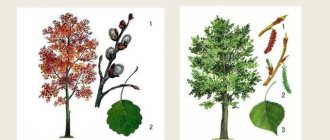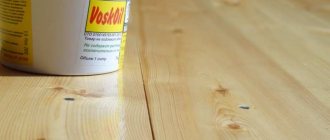What does alder look like?
This tree has one distinctive detail - cone-shaped earrings. In spring, they are usually green, soft and similar to birch trees, but closer to winter they become hard and change color to brown.
The perennial trunk is covered with smooth, dark-colored bark. The plant has a highly developed rhizome. It is located quite close to the soil surface, so the perennial may be somewhat unstable in strong gusts of wind. Given this point, it is not recommended to plant alder under a residential window.
The leaves are oval in shape with jagged edges. Its surface is smooth, but wrinkles can be felt closer to the center. They are attached to small petioles and arranged in a regular order.
Description of the plant
First, it’s worth taking a closer look at what alder looks like. It is a tree with foliage. Depending on the species, the height varies. It can reach several tens of meters, but some specimens grow very short. Alder is part of the birch family. Thanks to its powerful root system, it quickly takes root in a new place with any type of soil.
The alternate foliage is dark green in color. The flowering period occurs during the first warmth of spring. Earrings appear on the branches, and a few days after that their length increases. The wind easily knocks pollen out of them, which then pollinates female flowers.
The fruits of the tree are miniature cones containing seeds. When the moment of their maturation comes, they come out into the air and are spread throughout the territory. This is how alder reproduces. This period begins when the plant is about ten years old. Many other different representatives of the flora can be grown near it, because alder does not particularly conflict with its neighbors. Both shrubs and trees are planted next to it.
The tree develops especially successfully near birch, linden and spruce. Various types of mushrooms often develop around it or directly on it.
Types of alder
Currently, scientists have identified about 29 species of this plant. But there are no exact values, since the plant tends to change, forming new hybrid species.
Black alder
This species grows in Western Asia and North Africa, and is also found in Europe. This tree can grow up to 35 m in height and can reach 90 cm in diameter. The branches of the tree are perpendicular, so the crown of the tree has a pyramidal shape.
The active vegetative process begins when the tree reaches 10 years of age. The lifespan of the plant can reach up to 100 years.
The tree has a well-developed branched rhizome. As a rule, it is located close to the soil surface.
- The foliage is rounded with small veins measuring about 7 cm.
- With the onset of spring, yellowish-brown catkins bloom on the branches.
- Their length can reach 8 cm, and their diameter reaches 2 cm.
Closer to the cold season, they change: they acquire a brown color and become hard and pine-like.
Red alder
This perennial attracts attention with its dark red color. Trees can grow up to 20 m in height. The bark is smooth, gray-brown in color. The bushes have dense foliage.
- The leaves are pointed, oblong in shape. They are usually a deep red color.
- Due to this, the shrub is distinguished by its decorative effect.
- Just like other species, alder has cones. They are small and measure about 2.5 cm.
Gray alder
The plant is distinguished by its vitality, as well as its ability to adapt to any conditions. It has a narrow, curved trunk. The bark has a heterogeneous structure, with protrusions and is sticky to the touch.
- In young trees, the vegetative process is quite active.
- The tree does not stop growing new, young shoots.
- The leaves of gray alder are smooth on the outside and fleecy on the inside.
- Their size usually reaches 10 cm. Earrings bloom before the leaves.
As a rule, this happens at the end of March, at the beginning of April.
Collection dates and methods
Alder fruits are collected mainly in autumn and winter. They are collected as follows: using pruning shears, cut off the ends of thin alder branches from which the fruits hang, and then the branched parts are removed, and the fruits are dried in warm rooms to 12% humidity.
Basic requirements for the quality of raw materials
In finished form, the raw material consists of mature dried alder fruits, which are female, woody and overgrown catkins, similar to cones. The infructescences are mostly with open scales, oval-oblong or ovoid in shape with or without the presence of achenes-carpels. The infructescences are single without stems or with remains of stems no more than 1 cm in length, or several pieces are collected together on a thin stem.
The fruits consist of a hard, rough shaft and hard, numerous scales. The scales are six-lobed, the fruits are single-seeded, flattened. The color of the fruit is brown or dark brown. The smell is weak, the taste is slightly astringent. The length of the fruit is up to 15 mm, the diameter is up to 10 mm.
The humidity of the raw materials should not exceed 12%, ash content - no more than 3.5%; the content of crumbled achenes and scales should not be higher than 3%; separated from cones, stems, no more than 1%; inflorescences with stems over 10 mm - no more than 3%.
Use in folk medicine
All parts of the tree have medicinal properties. The cones begin to be harvested in late autumn, when they are fully ripe. They are cut and dried at room temperature.
When properly prepared, the fruits should have an astringent taste and be dark in color.
- Leaves begin to be harvested in early summer. They contain essential oils, tannins and organic acids. They are used as a hemostatic, diaphoretic and antimicrobial agent.
- A decoction of alder fruits is used for ailments of the gastrointestinal tract, allergies and rheumatism. The infusion helps with colitis and digestive disorders, for cleansing the skin and healing wounds.
Alder has proven itself well as an expectorant for bronchitis and tracheitis, antipyretic and diaphoretic for colds.
Preparations made from alder are usually safe for human health. Contraindications include individual intolerance, and an overdose can have a negative impact on health.
Characteristics of wood
Iron trees are distinguished by a unique trunk structure and a number of other parameters given below:
- The bark contains tannins that help resist the appearance of fungal diseases and various parasites.
- The fibers of the barrel are resistant to acids and are resistant to corrosion.
- The age process reaches the 200-year mark and is capable of further growth.
- The density of wood is large and equal to 1 t/m³, with a humidity of 12%. Therefore, the development of aging is slowed down.
- The girth of the aksakal trunk can exceed 200 cm.
Possessing such qualities, vegetation is capable of surviving in different climatic conditions. Drought and abundant humidity do not harm powerful abilities and cannot break an iron character.
Alder in construction
Wood can be used either independently or as an additional component in the manufacture of particle boards and plywood. Each type of alder has individual characteristics. Thanks to this, it can be used in various fields.
The advantages of building materials made from this type of wood include:
- Good resistance to high temperatures.
- Environmentally friendly.
- Moisture-absorbing properties.
- Condensation does not accumulate on the surface of the wood.
- Low thermal conductivity.
Alder is often chosen as a building material for making saunas. The wood burns well, but at the same time does not smoke much. When wood smolders, a pleasant aroma spreads.
Building materials made from alder are distinguished by their lightness, strength and availability, as well as their resistance to various deformations. Therefore, the material is often used for the manufacture of wells and in the construction of ships. Alder is often used in the woodworking and furniture industries.
Black alder is used in furniture production and various carpentry works.
This type is distinguished by its original wood pattern. Due to this, black alder is often used as a decorative material in the production of various interior items and finishing elements of cabinet furniture.
Red alder is used in the manufacture of musical instruments. Alder is often used to make window frames and doors. Its wood has antiseptic and antibactericidal properties and is absolutely safe for children.
When burned, gray alder wood emits a pleasant and unique aroma, which is why it is used to light fires.
Spreading
The natural habitat of the tree is considered to be areas with moist soil. For this reason, places near water bodies are a priority for him. It can be found in completely different parts of the planet. This tree grows even in the Northern Hemisphere, Asia, South America and the northern European mountains.
In Russia, two varieties of alder are most often grown: gray and black. An eastern species of plant is found in the Transcaucasian regions. Green alder grows in the Siberian region.
Photo Alder tree
Care
In order for alder to live long and decorate the area, you must follow simple rules of care:
- Protect the plant from various pests and diseases. It is susceptible to fungal diseases. For treatment it is necessary to use special formulations. Diseased areas are immediately removed and burned. Alder can also be damaged by insects. Some of these pests are lancet, woodworm, cutworm, moth, and alder corydalis. If they arise, it is not easy to fight them. To do this, it is necessary to use chemical preparations. And for prevention, first of all, it is necessary to dig up tree trunk circles during the wintering period, and also install traps made from garden glue.
- Water. Alder loves water, so with the onset of a dry period it is necessary to water, but with warm water.
- Get a haircut. Regular pruning is not required if these are not decorative specimens. In the latter case, to do this you need to wait until the plant sheds all its foliage. You can remove diseased or injured branches in the summer. The main thing is to finish this before the frost arrives.
- Loosen the soil. This procedure is carried out before wintering or when there are a large number of weeds around the trunk. To simplify maintenance, gardeners also lay out mulch from peat or wood chips.
